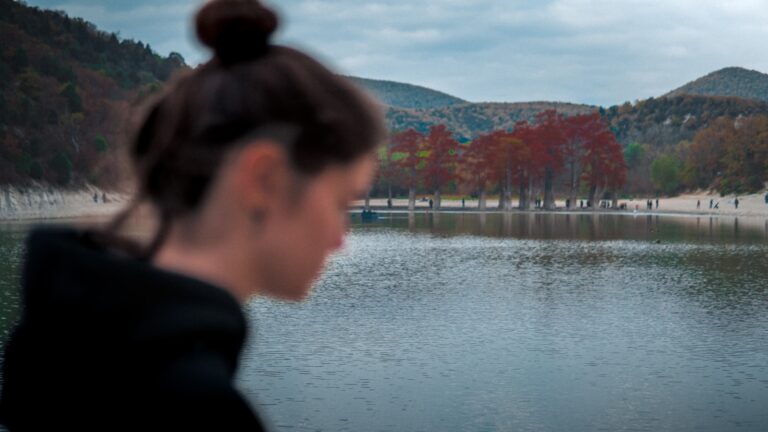America
Through the Snowy Lands by Train
Sometimes, the best way to travel is slowly—savoring each quiet, fleeting moment. So we skipped the plane and boarded a train to glide through the snowy March landscapes of the U.S. It turned out to be a fresh, surprising, and unforgettable experience.
We woke up to a stillness outside our train window—soft, quiet, almost lonely.

It was late March. Though spring had already whispered its arrival in some places, here the trees remained bare and leafless. Patches of snow were scattered along the roadside. The closer we got to New York, the deeper the snow became—and the barer the trees. Some lakes were edged in white, others completely frozen over, with only a small dark patch of still water in the center, unmoving. The train rolled past fields of brown winter grass beneath a pale, heavy gray sky.
That view stayed with us all the way from Chicago to New York.
Endless stretches of snow. Trees standing stripped and still, like sentinels of winter.
Beautiful Moments Along the Way
Yet there were gentle surprises, too. We passed a hill draped in untouched snow, and beyond it, rooftops with chimneys puffing smoke into the cold air. In another moment, a lonely cemetery appeared, dark crosses poking out of the snow like watchful silhouettes. Then came the sun—golden and kind—dancing lightly across the water’s surface as it dipped into the horizon.
My wife couldn’t stop taking photos. This was her first time seeing snow. (We had mostly stayed around San Francisco and Las Vegas—places where snow feels like something from a storybook.)
The late afternoon sun glinted like gold on the river, casting a quiet, glowing goodbye to the day.
We chose the train because I’d read online that the Amtrak ride across the U.S. was something special. People wrote, “You’ll see landscapes so beautiful, they’ll take your breath away.” So we gave it a try—from Chicago to New York, where our daughter lives.
We booked the tickets three months in advance and chose a roomette for two, which cost us $425. It’s a tiny private cabin, about a meter wide and two and a half meters long, with a lockable door and a curtain for privacy.
It felt like our own little hotel room on wheels—with two beds stacked bunk-style. During the day, the upper bed folds against the ceiling. At night, it folds down. The lower bed is made by pushing two seats together and adding a mattress. Each bed is narrow—about 80 centimeters wide—but long enough to stretch out. The room also had heating, a small pull-down table, storage, and even a compact sink that folded neatly away. There was also a built-in toilet with a thick wooden lid to keep odors at bay, plus a small trash bin. The only thing missing was a shower—though there’s a shared one at the end of the car.
In the morning, you’re supposed to fold the bed away and convert the space back into chairs. But we didn’t bother. We just tucked the upper bed up and sat cross-legged on the lower one, the way we do back home in Vietnam. It felt natural.
The train rocked us gently, like a cradle on rails. It creaked and swayed softly—almost like lying in a hammock. We slept deeply. We’d boarded at 9:30 p.m. in Chicago, and within an hour, we were fast asleep.
And up at the front, that old locomotive looked just like the vintage trains displayed at Đà Lạt Station back home.

What Is Amtrak?
Amtrak is the U.S. national passenger rail service, officially known as the National Railroad Passenger Corporation. Founded in 1971, it runs long-distance routes across the country, connecting more than 500 destinations in 46 states. Some of its most scenic and popular routes include:
California Zephyr: from Chicago to San Francisco (through the Rockies and Sierra Nevada)
Empire Builder: from Chicago to Seattle/Portland
Coast Starlight: from Los Angeles to Seattle
Lake Shore Limited: from Chicago to New York/Boston (the route we took)
Amtrak offers a range of options: basic coach seats, business class, and sleeper accommodations like roomettes and bedrooms. Meals are often included in sleeper tickets, and some trains even have panoramic observation cars for sightseeing.
While train travel in the U.S. isn’t always the fastest, it offers a slower, more scenic way to cross the country—ideal for travelers who value the journey as much as the destination.




